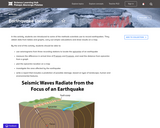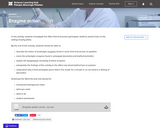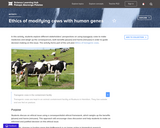
Students study damage descriptions from earthquakes and allocate a Modified Mercalli Intensity (MMI) number.
- Subject:
- Science
- Material Type:
- Lesson Plan
- Provider:
- Science Learning Hub
- Date Added:
- 03/07/2018

Students study damage descriptions from earthquakes and allocate a Modified Mercalli Intensity (MMI) number.

Students are introduced to some of the methods scientists use to record earthquakes. They obtain data from tables and graphs, carry out simple calculations and draw results on a map.

In this unit, students will use analogies to investigate and explain the Earth's layers. They will also model tectonic plate boundaries and movements.

In this activity, students investigate silage production and test a stream to see if run-off from silage is polluting it. Students then produce a pamphlet of their findings to educate the community.

Students make a rocket using baking soda and vinegar. They develop their understanding of rocket propulsion (forces) and investigate the amount of vinegar that will make the rocket go the highest.

In this picture dictation activity, students use a range of skills to investigate some ways humans use the waves on the electromagnetic spectrum.

Students become familiar with the names and symbols of the chemical elements by creating a rap or poem.

Students investigate the effect that fruit purees have on the setting of party jellies.

Students discuss how a variety of everyday objects can serve as metaphors for the important characteristics and functions of estuaries.

Students explore ethical issues related to fighting infection. Students learn about the science involved and the associated ethical dilemmas. They have opportunities to discuss and deliberate before making their own decision that they can justify.

This activity will help students identify ethical issues raised by transgenic animals and find out more about the 5 common ethical frameworks used to guide ethical decision-making - Consequences, Rights and Responsibilities, Autonomy and the right to choose for oneself, Virtue ethics, Multiple perspectives. The activity will encourage students to discuss the issue of genetically modifying animals to help treat human diseases.

Students consider the use of mice for bioassays and in establishing the lethal dose when researching/testing toxins. They consider the rights and responsibilities of all those affected by these methods and make a decision as to whether mice should be used in researching and testing for toxins.

Students use role-playing to explore different stakeholders' perspectives on the issue of using pig cells to treat type 1 diabetes. Transplanting pig cells into humans is a type of xenotransplantation, which raises ethical issues about animal welfare, individual rights and risk of spreading disease. Peoples' views will be influenced by their cultural, spiritual and religious perspectives.

Students use the internet to identify examples of when and why animals are used in research, which animals are used and animal welfare requirements. They will consider the potential harms and benefits to people and the animals affected by research involving animals and then present a written argument, supported by relevant scientific facts, in support of or against the use of animals in research.

In this unit, students develop their knowledge of selective sheep breeding so they can formulate an argument and make ethical decisions about breeding easy care sheep.

Students explore different stakeholders' perspectives on using transgenic cows to make medicines and weigh up the consequences, both benefits (pluses) and harms (minuses) in order to guide decision-making on this issue. The activity forms part of the unit plan Ethics of transgenic cows.

In this activity, students gain an understanding of the importance of genetic diversity within a population.

Students research and summarize the key features of bacteria, viruses, and fungi.

Students develop a concept map to summarize current ideas about states of matter after reading an online article.

Students simulate the passing of traits through three generations. The students work in groups of four "siblings" and compare their combinations of traits.